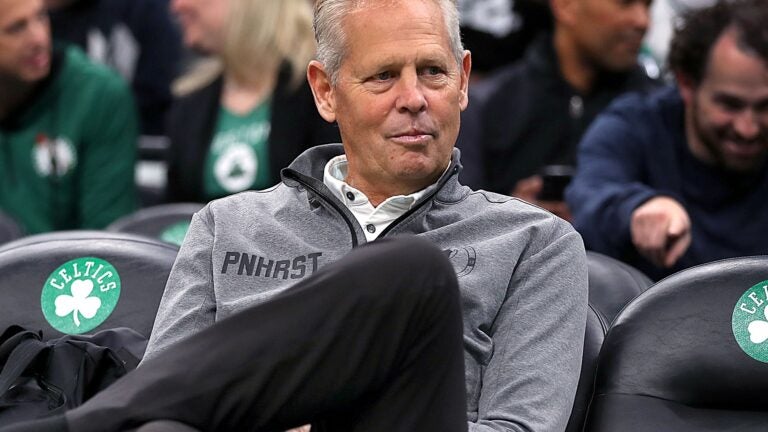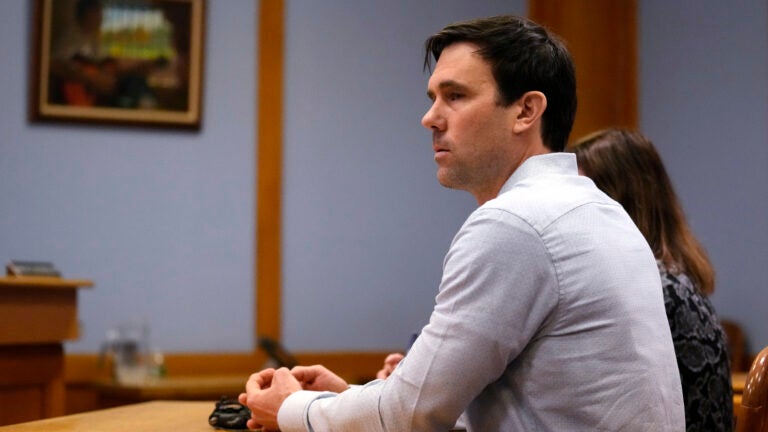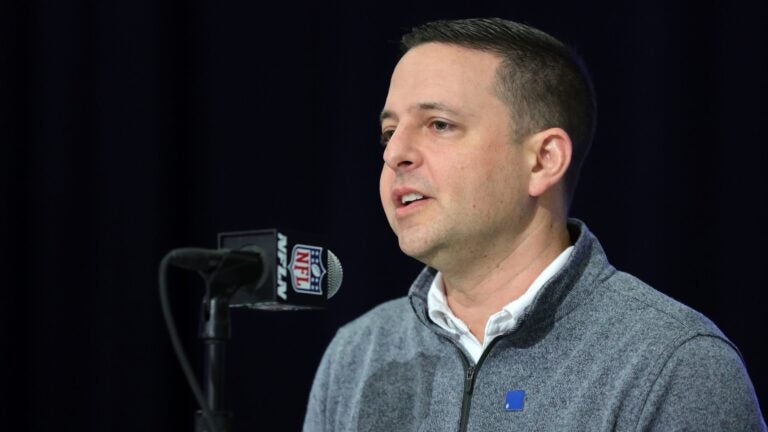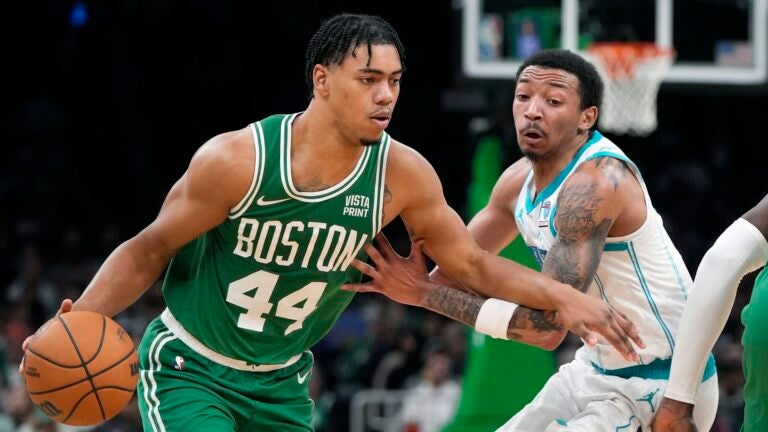The Celtics have a massive trade exception. Here’s what they can do with it.
As part of the Gordon Hayward sign-and-trade, Boston received a $28.5 million trade exception.

The Celtics ended up getting a valuable piece for Gordon Hayward – and it wasn’t a draft pick or a young player. As part of the sign-and-trade with the Hornets, the Celtics received a $28.5 million trade exception, the largest of its kind in NBA history.
Here’s what the trade exception is and who the Celtics can potentially acquire with it.
What are the rules on using trade exceptions?
A trade exception allows teams that are over the salary cap to trade for a player (or players) without having to trade one of their own players as long as the incoming salary isn’t larger than the exception plus $100,000. So, in the case of the exception acquired for Hayward, the Celtics can take back a player’s salary or multiple players’ salaries that go up to $28.5 million.
In addition to the trade exception for Hayward, the Celtics also received trade exceptions when they shipped Enes Kanter to the Trail Blazers and Vincent Poirier to the Thunder. Those exceptions are $5 million and $2.5 million, respectively. Trade exceptions can’t be packaged together and a player can’t be added on to an exception to match salaries in a trade. For example, the Celtics can’t package Hayward’s and Katner’s trade exceptions, or Hayward’s exception plus a player to acquire Damian Lillard and his $31.6 million salary (not like the Trail Blazers would do that trade to begin with).
Trade exceptions also have an expiration date. Teams must use their trade exceptions within 365 days since they were acquired or else they vanish. With the different timing of the 2020 NBA offseason, the Celtics may have less time than usual to use the trade exceptions they acquired last month, but they should still be able to use it during the next offseason at the latest.
How can the Celtics use the trade exception?
Just because the Celtics have a $28.5 million trade exception doesn’t mean they have to trade for a player that makes that exact amount. They can use the trade exception on any player or players, just as long as it fits into the exception they’re trading.
The Celtics can also split the trade exception. If they use the trade exception to acquire a player with a smaller salary of say $10 million, they will still have $18.5 million of the exception to use before its expiration date.
Another wrinkle in all of this is that the Celtics likely won’t be able to use the entire $28.5 million trade exception this season. By signing Tristan Thompson to the full non-taxpayer mid-level exception on Monday, the Celtics are hard-capped at $138 million, which is the NBA’s tax apron. The Celtics sit roughly $19.5 million below the tax apron, according to ESPN’s Bobby Marks. Of course, the Celtics could move $9 million in salary to accommodate that in order to use the full exception.
The Celtics are now hard capped with the Tristan Thompson signing.
Boston is a projected $19.5M below the apron.
— Bobby Marks (@BobbyMarks42) November 30, 2020
In addition to being limited by the tax apron, the Celtics may want to stay below the luxury tax, which is set at $132 million. With Jayson Tatum agreeing to a max extension in November, the Celtics may want to use the upcoming season to stay below the luxury tax because they will likely be above it next season. By standing under it now, it will help soften the repeater tax penalties in the future.
Who can the Celtics use the trade exception on?
If the Celtics can move $9 million in salary, they can use the entire $28.5 million trade exception on all but 31 players as they make more than that. Some of those 31 players are James Harden, Russell Westbrook, Kevin Love, and Bradley Beal, who all have been the subject of trade rumors recently.
A couple of star players the Celtics could acquire with the trade exception are guard DeMar DeRozan and center LaMarcus Aldrige of the Spurs. Both make more than $19.5 million (DeRozan making $27.7 million and Aldridge making $24 million), so the Celtics would have to do some cap finagling to make it work. With both stars over 30 years old and entering the final year of their deals, the Spurs’ asking price for DeRozan and Aldridge may not be that high, making it reasonable for the Celtics to trade for one of them without having to deal major assets on top of the exception.
Other recent All-Star players that enter the final year of their contracts that may become available for trade are Jazz center Rudy Gobert and Pacers guard Victor Oladipo. Because Gobert has won the Defensive Player of the Award twice, he’s eligible to earn the supermax and the Jazz may trade Gobert if they aren’t able to sign him to an extension, according to ESPN’s Tim Bontemps. Gobert’s relationship with young Jazz star Donovan Mitchell was reportedly rocky after both players tested positive for COVID-19, and with the Jazz extending Mitchell in November, Gobert may be the one in need of a new home.
As for Oladipo, he’s reportedly been looking for a way out of Indiana. DeRozan and Oladipo give the Celtics the option to replace Hayward’s impact on the perimeter and give them much needed wing depth. In the cases of Aldridge and Gobert, they can be the solution at center the Celtics have been searching years for.
Victor Oladipo asked other teams “Can I come play with y’all?” in front of his Pacers teammates, per @ThisIsJMichael pic.twitter.com/vcSyJVlhcB
— Jordan Heck (@JordanHeckFF) November 12, 2020
The Celtics can also get creative with the exception. Veteran big man Al Horford probably didn’t envision himself playing for a rebuilding Thunder team a year after signing with the 76ers and may want out of Oklahoma City. The Thunder acquired a future first-round pick when they traded for Horford in November because of his contract, and if the Celtics want to replenish their draft asset drawer this could be a way to do it. The Celtics actually did this in 2014, using the $10.4 million trade exception they acquired from the Nets in the Paul Pierce/Kevin Garnett trade to take on the contracts of Tyler Zeller, Marcus Thornton, and a first-round pick. Thornton and the pick were later moved to Phoenix for Isaiah Thomas.
If the Celtics aren’t able to trade for a star player, another veteran in Oklahoma City they can trade for is George Hill. Hill was traded from Milwaukee to Oklahoma City as part of a four-team trade last month and like Horford, probably doesn’t want to spend his final NBA years on a rebuilding Thunder team. He’s due to make $9.6 million this season, which would still give the Celtics nearly $19 million of the exception to use. With Kemba Walker scheduled to miss time and dealing with knee issues, Hill would give the Celtics depth they will likely need at point guard this season.
For options along the wing, Magic forward Aaron Gordon presents an enticing possibility for the Celtics to add to their perimeter depth. Gordon has put up solid numbers in Orlando over his six-year career but has never broken through to become a star player. With two years left on his deal and making $18.1 million this season, the Celtics can get Gordon without having to move other salary and would still have $10 million left on the exception.
With the exception not expected to expire until after the start of the 2021 offseason, the Celtics could use it in free agency. While you can’t use an exception to outright sign a player, you can use it as part of a sign-and-trade with the team the player was last on. DeRozan, Aldridge, Gobert, and Oladipo could be acquired this way. Or in a fantasyland scenario, the Celtics could end up getting Giannis Antetokounmpo to sign below the max and the Bucks actually agree to sign-and-trade him to Boston.
While the Antetokounmpo fantasy is certainly not happening there are several ways the Celtics can use the trade exception.
Get Boston.com's browser alerts:
Enable breaking news notifications straight to your internet browser.







Conversation
This discussion has ended. Please join elsewhere on Boston.com